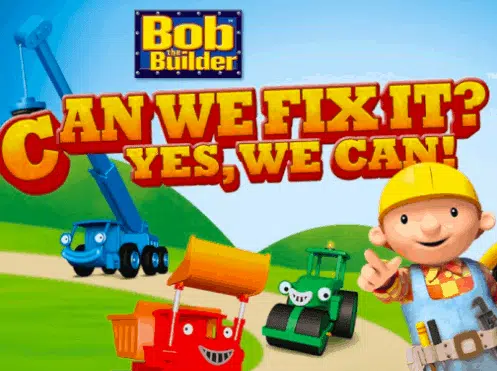One of the biggest mistakes that SEO newbies make at the beginning of their SEO journey is over-optimizing their website.
This can involve stuffing keywords into title tags and meta descriptions. It can involve using a bunch of keywords in the image alt text. It can involve doing this in their Google My Business Listing too.
But the place that we see over-optimization the most is in the website content.
What is Over-Optimization?
Website content becomes over-optimized when website owners (and SEO “pros” that don’t know what they are doing) write content with only one thing in mind: making Google happy.
With that being the end goal, they dig into the keyword research, find the right ones, and try to fit as many as possible into the content.
The more keywords the better, right?
No. No no no.
Google cracked down on keyword stuffing a long time ago. Today, you have to do much better to get Google’s attention.
If you do over-optimize your content, the result is content that is nearly unreadable. It comes across as spammy – to both the real humans that visit the site and the Google bots that are like “Wtf is this nonsense“?
But over-optimized doesn’t just mean “too many” keywords. It could simply mean that someone has shoehorned a keyword in where it doesn’t fit, making the content sound awkward. If it reads as awkward, or inauthentic, users and Google will pick up on this too.
If you are feeling triggered because this sounds like you, that’s alright. There is hope for you yet. It’s fixable.
How do I tell if my content is over-optimized?

Here’s how to find the content that needs to be deoptimized:
- Conduct an SEO audit to find the content that’s underperforming. These will be the pages with the least amount of traffic. You should be able to see these pages in Google Analytics and/or Google Search Console.
- Look at these pages with your own eyeballs. Read them. Have a friend read them. Do they sound awkward? If so, they are probably over-optimized (or you just need a better copywriter).
- Look for these things:
- Exact-match keyword anchor text
- Primary keyword in H1 and ALL H2s
- Focus keyword more than once in meta description
- A keyword density over 5%*
- Overuse of primary keyword with little keyword variation
- High bounce rate**
- If any of the above apply, or your content just sounds off, your content is likely over-optimized
*Keyword density is not an exact science. There is no “sweet spot”. Your content shouldn’t aim for a certain density. But, if your keyword density is over 5%, that’s too damn much. You can use tools like SEOBook to find keyword density.
**A high bounce rate could be an indication that users are getting to your site and are leaving because the content looks spammy or doesn’t have what they are looking for. High bounce rate alone doesn’t mean that your content is over-optimized.
My content sucks. What do I do now?

If you have over-optimized website content, you pretty much have two options:
-
- Remove it and redirect the URL.
- Deoptimize it.
Remove the Over-Optimized Content
You may choose to remove the over-optimized content if it’s just not worth it to re-write it. Maybe you are focusing on a keyword that you don’t care about anymore. Maybe the design or content is out-of-date. Maybe you just can’t bear to look at it anymore.
Whatever the reason, sometimes you just want that content off of your site. If that’s the case, then you can delete the page and set up a 301 redirect to an existing (related) page on your website. Forget to redirect and this becomes a 404, so you don’t want to skip this step.
Re-Optimize the Bad Content
If the page is focused on a keyword that you would like to receive traffic for – and you have the time or money to fix it – then re-optimizing it according to Google’s Quality Guidelines is the way to go. This is the best way to bring your website back from the dead.
How do I de-optimize my over-optimized content?
So your content is a little sucky and you have decided that you want to fix it. There are many ways to do this based on how over-optimized your content is (and in what way).
Content De-Optimization Checklist
To keep things simple, here is a checklist you can run through in order to re-optimize your content in the best way:
- Content provides value to the reader.
- Content matches the intent of the user when they searched for the term. (i.e. the content doesn’t mislead the reader in any way)
- Content matches the tone and style of the website overall, i.e. content is “on-brand”.
- Content strives to be better in quality than the top ranking posts for the focus keyword.
- Keyword variations are used as opposed to just the primary keyword on repeat.
- SEO title includes the focus keyword 1 time only.*
- H1 includes the focus keyword 1 time only.*
- Meta description includes the focus keyword 1 time only.*
- URL makes sense for the page. Not just another place to spam with keywords.
- Some H2s include the focus keyword, but not all.
- Anchor text of internal and external links are relevant to the pages they are linking to and show variation, i.e. not exact-match keyword.
- Image alt text contains the focus keyword ONLY if it is relevant to the image. Alt text should describe what the image is actually about. People who are visually impaired rely on screen readers to read this text so that they know what the image is about.
- Keyword density is under 3% for the focus keyword; under 5% for all keywords (focus and related).
*I try to avoid including the focus keyword in the title tag AND the H1 AND the meta description. Choose two. Then, use a keyword variation in the field that’s left over.
This checklist is by no means exhaustive when it comes to SEO best practices. There is much more involved when it comes to getting a page to rank.
However, if your content is already in the deepest depths of the SERPs, then making these fixes will be a major improvement. If you have more questions about on-page SEO overall, send me a message.
“Fetch as Google” for Faster Indexing
Once you have tweaked and edited your previously over-optimized content, you can submit it to Google Search Console for faster indexing.
To do this, use the URL Inspection Tool (previously called the “Fetch as Google” feature) to see the updated version of your page or article. While there’s no set time on how long it will take for Google to index a new or updated page, it is said that using this feature will speed up the process.
Have a bunch of URLs to submit? Build and submit a sitemap to Google Search Console instead.
How do I avoid over-optimization in the future?
Re-optimizing your keyword-spammy content is a rather involved endeavor in and of itself. Once you do it, you will likely be like “Whew! I never want to do that again”.
Then, the key becomes avoiding over-optimization in the first place.
Best Practices to Avoid Content Over-Optimization
Here are a few tips to avoid over-optimizing your content in the future:
- Write for the user first. Don’t worry about Google right away. You want to make sure your content is stuff your target audience actually wants to read and enjoys reading.
- Find the right keywords. Just because a keyword sounds good doesn’t mean it’s right for you. Conduct thorough keyword research to find terms that fit where users are at in the Customer Journey. Make sure they get adequate search volume. Finally, they should fit the intent of the user. What is the user hoping to find when they search that term? Does your content/business provide that?
- Use keyword variations. Don’t lean on your focus keyword any time that it can be used in the content. Mix it up. But, again, make sure it makes sense.
- Don’t keyword stuff anything. This includes the title tags, headings, meta descriptions, URLs, image alt text, website footer, website code, the sidebar, your Google My Business listing, anything. Just don’t do it.
- Avoid over-optimized anchor text. If you are linking internally or externally to a resource, the anchor text used should make sense. Think, “This case study found that…” vs “Read this SEO content help case study about…”.
- Create a content outline. Map out the flow of your content and you want to cover. Try to answer all of the questions a user may have about your focus topic. Don’t leave them guessing. At the same time, don’t simply copy the outline of the top ranking content (i.e. using the same title and all of their H2s).
- Make your content objectively better than the top ranking content. This can be hard to do but should be one of your main goals. After all, you want users to choose you over your competitors. That means that you have to be better at showing them that you have what they need.
- Use SEO tools. There are loads of SEO tools out there to help you with on-page SEO. Tools like Page Optimizer Pro will tell you when you have gone overboard with the keywords and where to include them if you don’t have enough.
Keep in mind that you can always refer back to the Content De-Optimization Checklist to make tweaks to under-performing content. That is, if you see a page that could use a boost, make sure that you are covering all your bases.
Good Content Makes Your Users Happy – and Google, too!
If you start creating content with the primary goal of getting SEO traffic, it will have the opposite effect. Google prioritizes content that matches what the user is looking for. In so facto, you should create content that puts your target audience first.
THEN you can go back and follow best practices for on-page SEO. Doing it in reverse – de-optimizing your content – is a pain. It’s a better use of your time or money to get it right the first time.
Need a little extra help with this? Thought you might. That’s why I have created a FREE, 30-page ebook all about it. You can download that ebook here.


